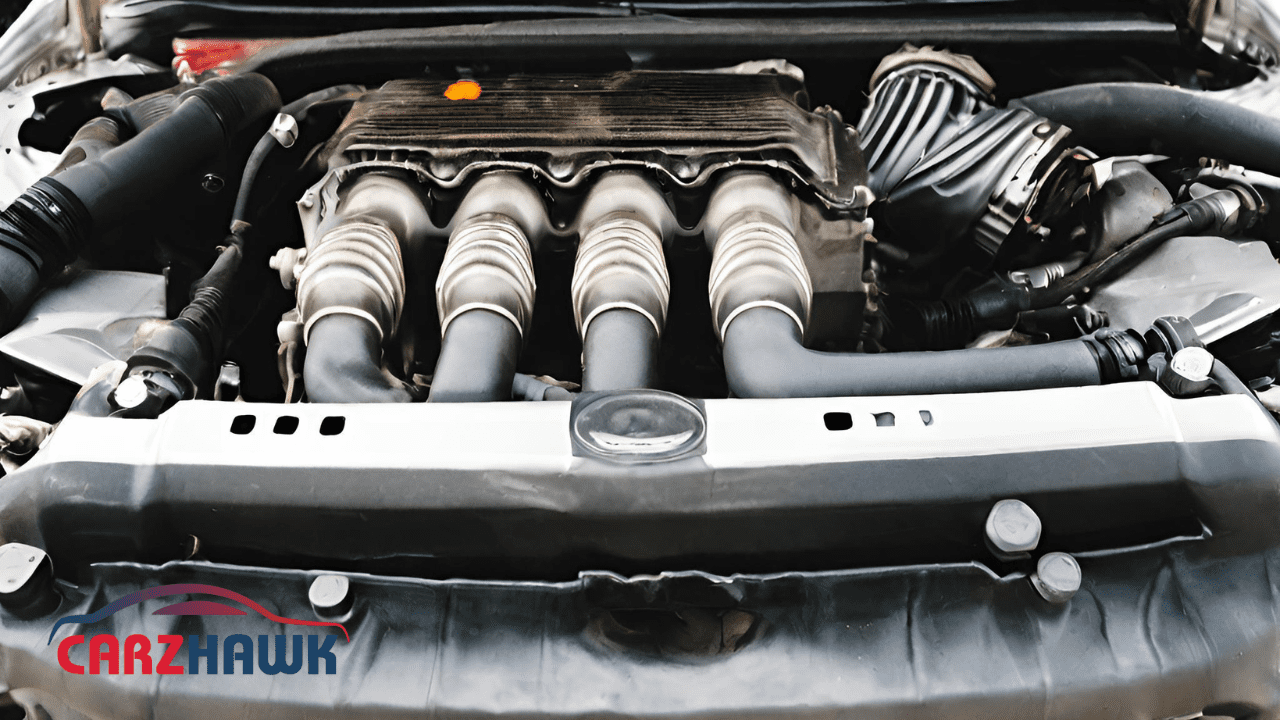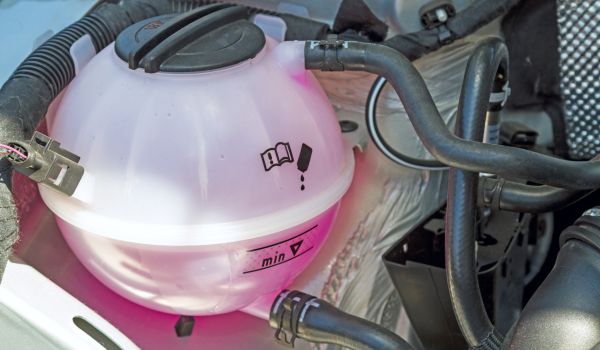Coolant, which is also called antifreeze, is important for keeping your car’s engine running well. Coolant keeps the engine from getting too hot, and it won’t freeze up in the winter either. You might be thinking if it’s safe mixing green and orange coolant.
There are different kinds of engine fluid in different colors, and they all use different chemicals. People who drive cars shouldn’t be mixing green and orange coolant because they have different chemicals in them that can turn the antifreeze into sludge or hurt the radiator, water pump, and engine block badly.
We’ll take a close look at the different types of coolant and what their colors mean in this piece. Read on to learn why you can’t mix green and orange coolant.
Different Kinds of Engine Coolant
Even though it would be convenient if all engine coolants were the same, they are not. The truth is that car companies use three different coolants. And putting the wrong one in your car can have very bad results.
The three kinds of engine fluid that are used are
Technology for Adding Inorganic Matter
There are blue or green versions of this coolant, and older cars tend to use them. IAT coolant use Ingredients like propylene glycol or ethylene glycol.
The coolant in your car will need to change every two years, or about 24,000 miles. In recent years, this coolant has lost popularity, but it is still the best choice for cars made in the 20th century.
Technology for Organic Acid
This coolant last longer than IAT coolants and is used in newer cars. The Organic Acid Technology coolant will only needs to change every five years, or about every 50,000 miles.
Some people, though, say that OAT coolants don’t stop rust as well as IAT products do inside the cooling system.
Mix of Technology for Organic Acid
Drivers can get the best of both worlds with HOAT coolants. Like IAT goods, these coolants can stop corrosion, but they can also keep working well for at least five years.
There is a chemical in HOAT coolants that lets the product move through the engine and cooling system’s different temperatures.
It can do this without causing rust to build up and keep all the moving parts of the engine well oiled.
Is it okay mixing green and orange coolants for engines?
There is no way that these different coolants can mix together in your car.
It is not a good idea to mix IAT, OAT, and HOAT coolants together because they all have different chemical formulas.
If you pour these coolants together, you might think you are giving your engine more protection against corrosion, but the opposite is true.
When coolants with different chemical formulas are mixed, rust can build up faster inside the engine. This can also cause a chemical reaction that clogs up the cooling system.
Check your owner’s manual to make sure you’re using the right coolant for your car. Different automakers will have used a different coolant in the engine, and the manual should list which OEM goods were used.
But if you’re not sure, go to your neighborhood dealership. They will be able to tell you the right information about coolant.
This is where problems can come up in 2022: there are a lot of aftermarket coolants to choose from.
Does it matter what color the coolant is?
What’s really important is not what color coolant you use, but what chemicals are in the antifreeze.
When adding coolant, this is especially important if you plan to use a coolant that is different from what the owner’s manual suggests.
The following chemicals are often in coolants:
- Nitrate of Silicate
- Potassium phosphate
- Not fun
There are some of these chemicals in both OAT and HOAT coolants, but there are often parts of IAT coolants that don’t work well with current engines.
One problem with ingredients like Borate is that they hurt the nonmetal gaskets, seals, and other parts that use in current engines.
In order to understand why green and orange coolants should not be mixed, let us first take a closer look at these two types of antifreeze.
Green coolant
However, some brands use different colors for their OAT and HOAT goods, while green has long been the color of IAT coolants.
It’s not a good idea to choose your car’s coolant based on color alone; you should also make sure that the coolant has the right additives for your engine.
Most of the time, though, a green antifreeze that uses IAT use in cars before 2000.
There are chemicals like phosphate and silicone in IAT coolant products. These work with the propylene glycol and ethylene glycol to keep the cooling system in good shape.
Older cars’ engines are of copper and steel, and the green coolant does a good job of keeping these metal parts from rusting.
Silicones work to seal the metal parts together and stop wear and tear, and phosphates in the mix get rid of built-up oil and grease.
Some types of coolants have ethylene and propylene glycol in them because they are the chemicals that cool down the engine.
Orange Coolant
GM and VW both use orange coolant a lot. This coolant has organic acids in it, and Dex-cool is a well-known OAT fluid. The color of Dex-cool is orange, and this is usually what product drivers mean when they say “orange coolant.”
Instead of a lot of metal parts, modern car engines and cooling systems have a lot of aluminum and polymer parts. Orange coolant has carboxylates in it, but IAT coolants don’t.
OAT coolants have this chemical compound that stops corrosion. It won’t damage the metal and nylon parts like green coolant will, though.
The issue with orange coolant is that air can get into the cooling system if there isn’t enough coolant. This can damage the system and cause blockages.
Is it okay mixing green and orange coolant?
You can see that green and orange coolants are very different. Using the wrong one in the wrong car can do a lot of damage to the engine.
Newer engines may have nonmetal parts that get damaged by green coolants, and orange coolants may not stop rust if they don’t have the right additives in them.
What happens when you mix them? Is it okay mixing green and orange coolant? Short answer: no, mixing orange and green coolants is not a good idea and could hurt the engine.
There is a chemical reaction that turns green and orange coolants into a gel-like material when they are mixed. It is not good for your car’s cooling system for a thick, slimy material to try to get through it.
Mixing green and orange coolant will really clog up the cooling system, which will stop the coolant from doing its very important job.
This thick material will stop the coolant from moving freely, and the system will become completely blocked. If the coolant gets stuck in the system, it won’t be able to move around the engine, which will make it boil.
It’s possible for your car engine to burn out if it can’t cool down properly. Everyone who drives should do their best to keep the engine from getting too hot. This is the main reason why you shouldn’t be mixing green and orange coolants.
But the sludge that the two coolants make can hurt the water jackets, heaters, water pumps, and other parts even if the engine doesn’t get too hot.
The bad coolant mix can also get stuck in the heater core or radiator, which can cost a lot to fix or replace.
What kind of coolant should I use in my car?
If it’s time to add more antifreeze to your car’s cooling system or clean it out, you may be confused about what kind to use.
You should be able to find this information in your owner’s manual, but if you can’t, here is a list of the coolant products that different makers use.
Talk to your local shop if you’re still not sure what kind of coolant to use in your car. It’s not worth the risk to mix coolants or put coolants with the wrong ingredients in your car’s engine.
FAQs
How can I tell if my radiator is HOT?
The coolants used in HOATs used to be yellow. There are now a lot of different colors of this type of coolant, though, because a lot of different brands sell it.
Don’t just look at the color; read the list of ingredients to make sure the product you’re using has the right mix to work in your car’s cooling system.
What will happen if I fill up my car with the wrong coolant?
You could hurt the cooling system and other parts of the engine if you use the wrong coolant in your car.
If you use the wrong coolant, rust and a chemical reaction could happen. This could hurt the radiator, heater core, and other important parts.
Is it okay mixing green and orange coolant?
Keep different color coolants separate in your car. Using two different coolants won’t hurt your car right away, but it might make something that looks like sludge. In the long run, this thick mixture can damage the cooling system badly by getting stuck in it.
Is it possible to add more water to a hot engine?
Adding new coolant to your car should only be done when the engine is cold. It is risky to add coolant to a hot engine because the quick drop in temperature can damage the engine block.
How can I tell if my water level is low?
A car’s engine coolant is getting low when it shows a number of symptoms. If the coolant level is too low, the temperature gauge will show a high reading, the engine will smell sweet, the gas mileage will be bad, and the heater won’t heat the air when it’s turned on.
Mixing Green and Orange Coolant -Conclusion
You should never mix green and orange coolants because they are made of different chemicals. There is a chemical reaction that happens when you mix green and orange coolant. The two liquids change into a thick, gel-like material.
The green and orange coolant can damage all parts of the engine and cooling system when they mix and get sludgy. If you mix green and orange coolant in a bad way, the engine could burn out completely.
This won’t happen if you always use the right color coolant for your car’s kind and brand.





